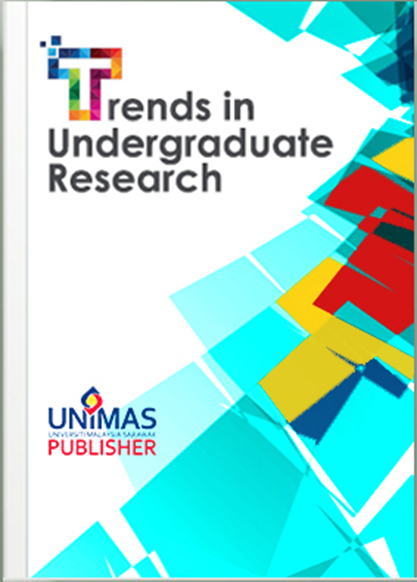WeWasteNoMore: A Mobile Food Waste Management & Food Aid Application
DOI:
https://doi.org/10.33736/tur.6050.2024Keywords:
Food waste, food aid, mobile applicationAbstract
Nowadays, food waste is becoming a major problem. According to the Food and Agriculture Organization (FAO), almost half of all food produced will never be consumed in our society. The process of wasting food might bring significant impacts to the environment as well. In Malaysia, the commonly used methods to manage food waste unsustainable for the environments. Therefore, the main purpose of designing and developing WeWasteNoMore with Waterfall model in this project is to create and manage food inventory wisely. Besides, this application can generate monthly expenses based on the food purchased. The proposed application received positive feedback from the evaluation.
References
Anoshyna, O. (17 December, 2016). Why Choose Firebase as Cloud Backend for your Mobile Apps. Retrieved from Super Dev Resources: https://superdevresources.com/why-use-firebase/
Dart overview. (n.d.). Retrieved from Dart: https://dart.dev/overview
Definition of 'Waterfall Model'. (n.d.). Retrieved from The Economic Times: https://economictimes.indiatimes.com/definition/waterfall-model
Egg Sizes and Comparison. (28 September, 2020). Retrieved from My Weekend Plan: https://www.myweekendplan.com.my/egg-sizes-and-comparison/
FAO. (23 March, 2011). Food loss and food waste. Retrieved from Food and Agriculture Organization of the United Nations: https://www.fao.org/food-loss-and-food-waste/flw-data)
Kenny, S. (23 March, 2018). Food and Health Policy Institute. Retrieved from Food and Health Policy Institute: https://foodinstitute.gwu.edu/article-archive/do-usda-standards-encourage-food-waste
KitchenPal. (2019). Retrieved from KitchenPal: http://kitchenpalapp.com/en/
Lipinski, B., Hanson, C., Waite, R., Searchinger, T., Lomax, J., & Kitinoja, L. (2013). Reducing food loss and waste. Retrieved from http://pdf.wri.org/reducing_food_loss_and_waste.pdf
Meet Android Studio. (n.d.). Retrieved from Android Studio: https://developer.android.com/studio/intro
NoWaste. (2020). Retrieved from NoWaste: https://www.nowasteapp.com/
Rahman, S. (4 March, 2019). A simplified introduction to Dart and Flutter. Retrieved from FreeCodeCamp: https://www.freecodecamp.org/news/https-medium-com-rahman-sameeha-whats-flutter-an-intro-to-dart-6fc42ba7c4a3
ReFED. (6 April, 2020). ReFED'S COVID-19 U.S. Food System Review. Retrieved from ReFED: https://refed.org/articles/refeds-covid-19-u-s-food-system-review/
Rodgers, R. F., Lombardo, C., Cerolini, S., Franko, D. L., Omori, M., Linardon, J., Guillaume, S., Fischer, L. and Tyszkiewicz, M. F. (2021). “Waste not and stay at home” evidence of decreased food waste during the COVID-19 pandemic from the U.S. and Italy. Appetite, 160, 105110. https://doi.org/10.1016/j.appet.2021.105110
Smart Kitchen. (2020). Retrieved from Smart Kitchen: http://www.smartkitchenapp.co/
Sulaiman, N. F., & Ahmad, A. (2018). Save the food for a better future: A discussion on food wastage in Malaysia. International Journal of Law, Government and communication, 3(10), 12-21.
Downloads
Published
How to Cite
Issue
Section
License
Copyright (c) 2024 UNIMAS Publisher

This work is licensed under a Creative Commons Attribution-NonCommercial-ShareAlike 4.0 International License.
Copyright Transfer Statement for Journal
1) In signing this statement, the author(s) grant UNIMAS Publisher an exclusive license to publish their original research papers. The author(s) also grant UNIMAS Publisher permission to reproduce, recreate, translate, extract or summarize, and to distribute and display in any forms, formats, and media. The author(s) can reuse their papers in their future printed work without first requiring permission from UNIMAS Publisher, provided that the author(s) acknowledge and reference publication in the Journal.
2) For open access articles, the author(s) agree that their articles published under UNIMAS Publisher are distributed under the terms of the CC-BY-NC-SA (Creative Commons Attribution-Non Commercial-Share Alike 4.0 International License) which permits unrestricted use, distribution, and reproduction in any medium, for non-commercial purposes, provided the original work of the author(s) is properly cited.
3) For subscription articles, the author(s) agree that UNIMAS Publisher holds copyright, or an exclusive license to publish. Readers or users may view, download, print, and copy the content, for academic purposes, subject to the following conditions of use: (a) any reuse of materials is subject to permission from UNIMAS Publisher; (b) archived materials may only be used for academic research; (c) archived materials may not be used for commercial purposes, which include but not limited to monetary compensation by means of sale, resale, license, transfer of copyright, loan, etc.; and (d) archived materials may not be re-published in any part, either in print or online.
4) The author(s) is/are responsible to ensure his or her or their submitted work is original and does not infringe any existing copyright, trademark, patent, statutory right, or propriety right of others. Corresponding author(s) has (have) obtained permission from all co-authors prior to submission to the journal. Upon submission of the manuscript, the author(s) agree that no similar work has been or will be submitted or published elsewhere in any language. If submitted manuscript includes materials from others, the authors have obtained the permission from the copyright owners.
5) In signing this statement, the author(s) declare(s) that the researches in which they have conducted are in compliance with the current laws of the respective country and UNIMAS Journal Publication Ethics Policy. Any experimentation or research involving human or the use of animal samples must obtain approval from Human or Animal Ethics Committee in their respective institutions. The author(s) agree and understand that UNIMAS Publisher is not responsible for any compensational claims or failure caused by the author(s) in fulfilling the above-mentioned requirements. The author(s) must accept the responsibility for releasing their materials upon request by Chief Editor or UNIMAS Publisher.
6) The author(s) should have participated sufficiently in the work and ensured the appropriateness of the content of the article. The author(s) should also agree that he or she has no commercial attachments (e.g. patent or license arrangement, equity interest, consultancies, etc.) that might pose any conflict of interest with the submitted manuscript. The author(s) also agree to make any relevant materials and data available upon request by the editor or UNIMAS Publisher.

